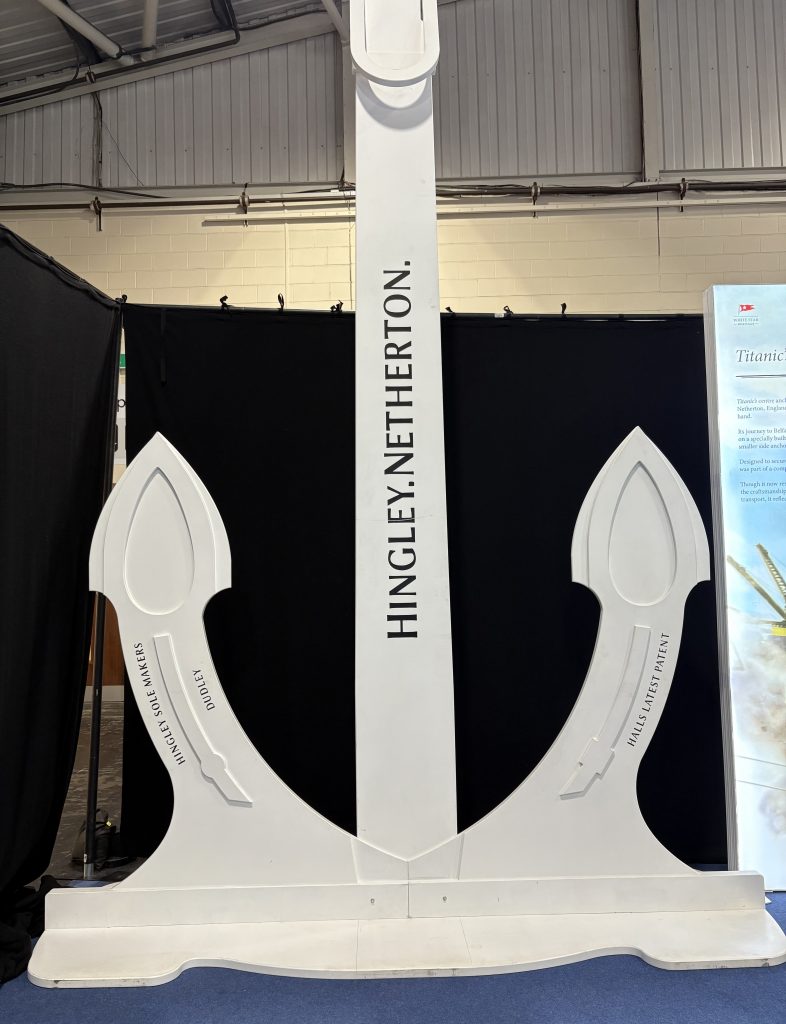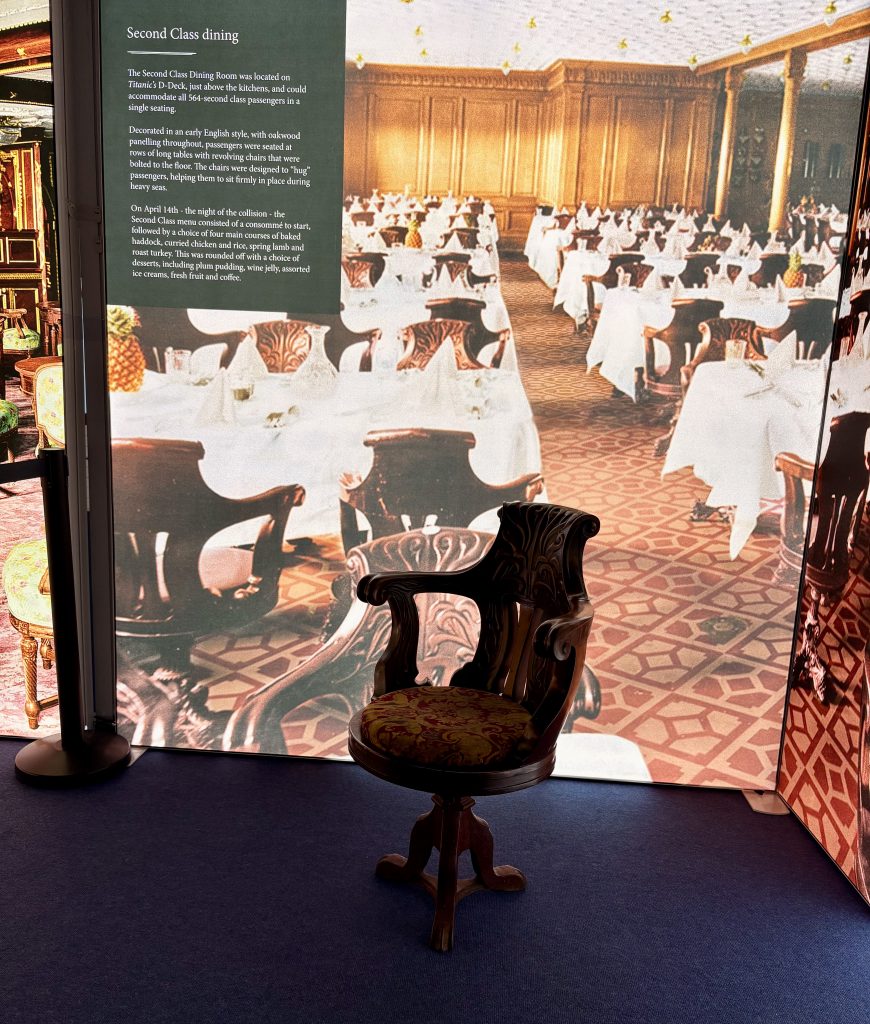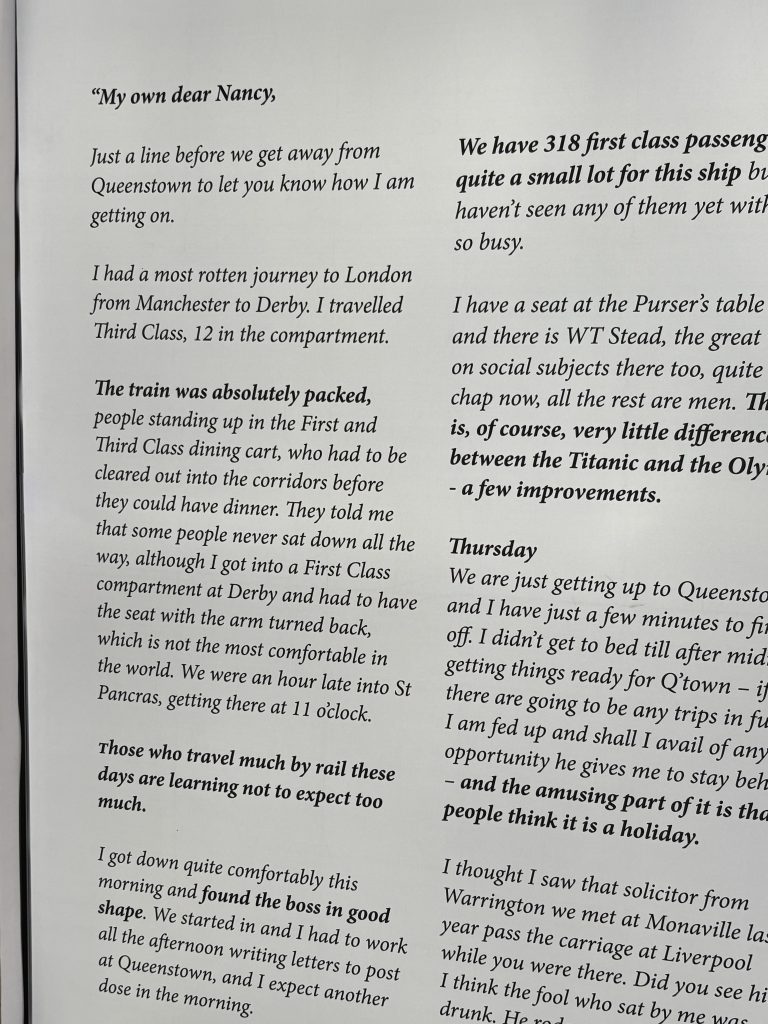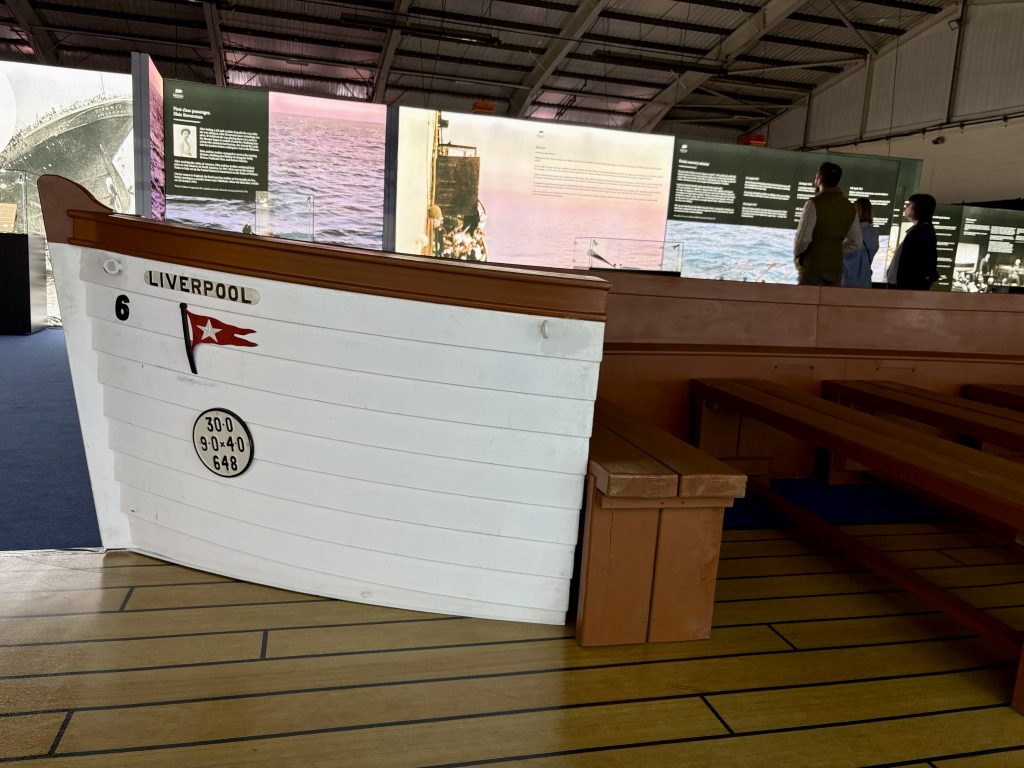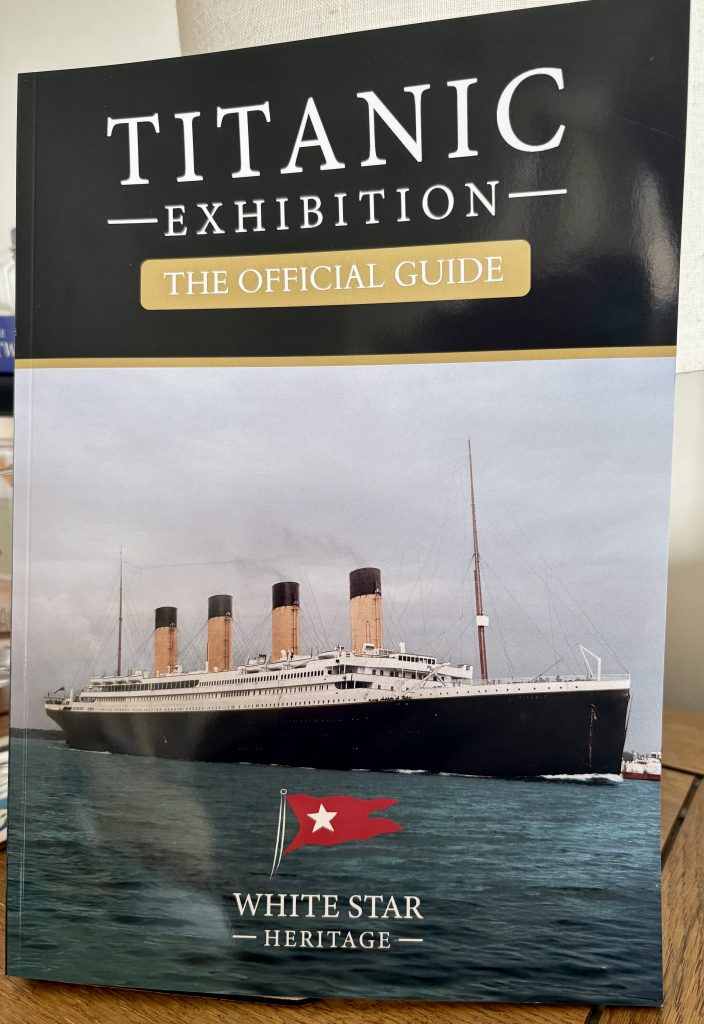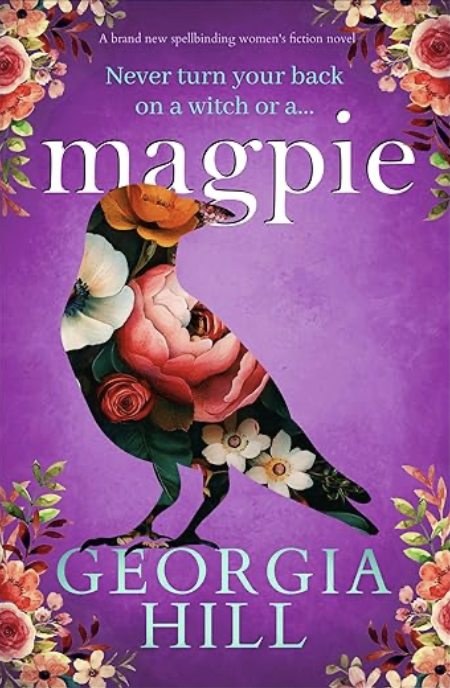As I said in a previous post, I’m just back from the Titanic exhibition. It’s a touring display and arrived at Exeter’s Westpoint this month. I nearly didn’t go due to ongoing and very tedious back problems but I’m so glad I made the effort.
I got in touch with Event Management beforehand as I was concerned about access. Sarah was incredibly helpful – and human. My thanks go to her and the team at Exeter Westpoint who made my visit seamless and stress free.
On arrival I was given a ‘Boarding Card.’ Was very chuffed – mine was in the name of Mrs Bess Waldo Allison, a passenger travelling with her entire family, plus cook, nanny and butler. The immediate family sailed First Class, with their servants in Second.
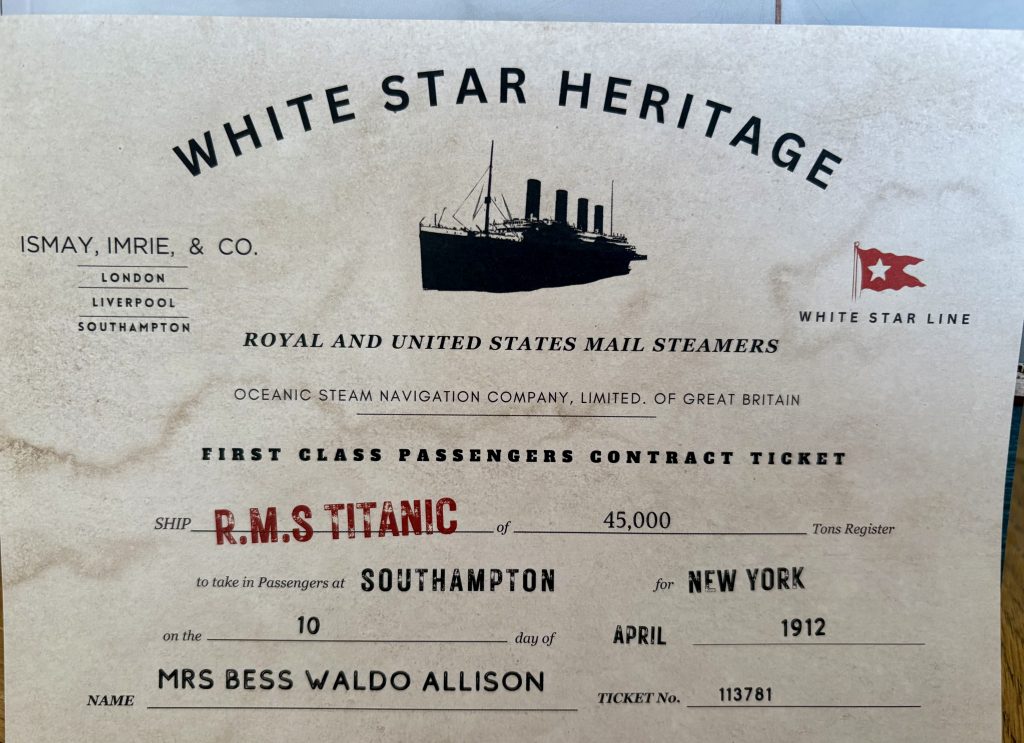
The exhibition covered the design and construction of the ship at the Harland and Wolff shipyard in Belfast, the facilities on board (amazingly luxurious for First and Second Class and not bad even for those in Third), the tragedy itself and Titanic’s legacy.
Here’s a mock up model of the anchor, a truly enormous thing. I had to take a photograph as it was made in Netherton, not far from where I grew up.
And here’s the Second Class Dining Room. Chairs were bolted to the floor to prevent accidents should the seas be rough. Ironic, as the sea was milkpond calm on the night the Titanic went down. Food was fine dining in First and Second Class, with a menu of consommé, baked haddock and wine jelly. In Third Class passengers enjoyed rice soup, roast beef and plum pudding whilst sitting at long tables, refrectory style.
Having endured one or two pretty dreadful train journeys lately, this letter caught my eye. Even over a hundred years ago, in the heyday of train travel, an uncomfortable journey could be experienced. The poor man was completely unaware of the horrors yet to come.
The exhibition was imaginatively curated to be as immersive as possible. I was less interested in the modern investigations into the resting site of the ship but was fascinated by the stories of the passengers on board in 1912. These couldn’t fail to tug at the emotions. Over a black and white film of mocked up images was relayed real life testimonies from those who survived. A steward, who earlier had found a place in a lifeboat for a young woman, only to be rescued, himself, from the freezing waters into the very same boat, ending up sitting alongside her. A woman who kept frightened children distracted by playing a musical toy. And then there were the Titanic’s cats, Jenny and her kittens, who kept the galley clear of rats and who went down with the ship. Tiny, emotional details and all terribly moving.
And what of Mrs Bess Waldo Allison?
At the exit of the exhibition was an enormous board detailing the names of those who survived – and those who had perished. I’d gone into it assuming fairly confidently that Mrs Waldo Allison had survived. A woman travelling First Class, if myth and legend is to be believed, would have a good chance. Imagine my shock when I scanned the list of survivors in vain. Mrs Waldo Allison died, as did her husband. Their son survived, being taken into lifeboat number 11 along with the family’s nanny and cook, an Alice Cleaver and an Amelia Brown.
Having a real life passenger assigned to you was clever and impactful.
And it wasn’t just the lives onboard which were changed forever. The disaster hit Southampton hard too. The port from which the Titanic sailed provided much of the ship’s workforce. It’s said that in a dockside primary school every child on roll lost a father.
It’s no wonder the Titanic disaster still fascinates, even after all this time.
If you get the chance to experience the exhibition, I highly recommend it.
Love,
Georgia x
PS I’ve since disappeared down a research rabbit hole concerning Bess. Turns out hers is a famous Titanic story. Look her up and you’ll see what I mean.


